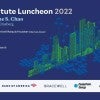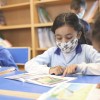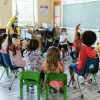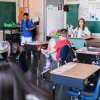
This research brief examines student, campus, and neighborhood characteristics that can be considered risk or protective factors for the likelihood of an English learner (EL) becoming an LTEL (long-term English learner).

This research brief examines student, campus, and neighborhood characteristics that can be considered risk or protective factors for the likelihood of an English learner (EL) becoming an LTEL (long-term English learner).

Continuity and supporting a student’s home language are helping more kids become English-proficient
Increasingly, Houston-area students learning English in public school are taking longer to become proficient, which is holding them back from mastering other subjects and moving forward in their educational journey. In a new report, we identified a few factors that might be contributing to this trend—as well as factors that could lead to better outcomes.

Schools are enrolling now for next year across Houston and the state of Texas, with officials in many districts still hoping to bring their headcounts back up to prepandemic levels, particularly prekindergarten, which has 25,000 fewer students than it did in 2019-20.

Kinder Institute Luncheon 2022
After two years of virtual events, the 2022 Kinder Institute Luncheon will once again be one of Houston’s most insightful gatherings of business and community leaders!

Student homelessness is pervasive and hard to track. COVID-19 made things worse.
Before the pandemic hit in March 2020, Faith—a single mother with two children, one in third grade and one in fifth grade—worked at a sports stadium in Houston. Her focus at the time was “paying for a room and trying to pay for child care,” she stated during an interview. But after the pandemic began, the stadium canceled games and Faith found herself out of work. Not long afterward, she and her children were evicted.

MacKenzie Scott’s unprecedented gift comes as students, teachers try to recover from pandemic’s toll
Earlier this month, Communities In Schools of Houston, a non-profit organization that has served the Houston community for over four decades, received an unprecedented financial gift.

Student Mobility in Texas and the Houston Area
This report is the culmination of a multi-year study on student mobility undertaken by the Kinder Institute for Urban Research's Houston Education Research Consortium in collaboration with 10 public school districts in the Houston area.

Houston Education Research Consortium shares results from the Survey on Social and Emotional Skills. A panel discusses the study’s local and international implications.

The Relationship Between School-Year Mobility and School Performance in the Houston Area
A study of 10 public school districts in the Houston area found that the higher the school-year mobility rate at a school, the lower its accountability performance.

Consistency in Campus Student Mobility Predicting Campus Mobility at Houston Area Public Schools
This brief relays findings on how campuses’ student body characteristics, neighborhood features, campus attributes, and nearby alternative schooling options influence campus mobility rates.

Tens of thousands of students in the Houston area switched schools during the school year annually. This study examined what this mobility meant for students’ performance on state accountability tests, high school grade retention, high school dropout, and high school graduation.

School Suspension and Juvenile Justice Contact in the Houston Independent School District
This two-part study seeks to understand the relationship between school suspensions and juvenile justice contact in the Houston Independent School District (HISD).

Student Mobility Leaving Districts in the Houston Area: Where do students go? And do they return?
This study highlights the unique patterns of student mobility and the returner phenomenon in 10 Houston-area school districts.

Flows of Student Mobility in the Houston Region
In this series of research briefs, HERC examines the between district mobility of students from the perspective of 10 public school districts in the Houston area.

Student Mobility Networks in the Greater Houston Area
This brief explores the informal networks of elementary school student mobility in the Greater Houston area across 27 independent school districts (ISDs).
Rice University
Kraft Hall
6100 Main Street, Suite 305
Houston, TX 77005-1892